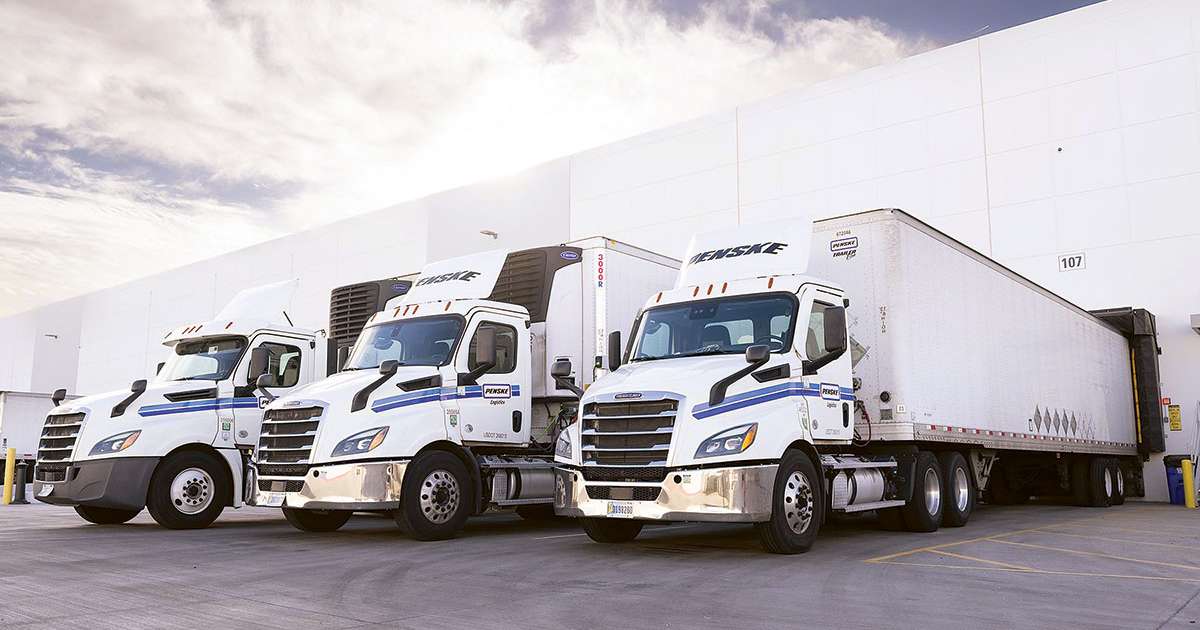🎣 2026 Freight Predictions (Print Preview)
A preview from FreightCaviar Print. December copies are still available.
Margins are tight, and the freight market isn’t making it easier. Here's how brokers are rethinking their systems to stay profitable in 2025.

Margins in freight brokerage are constantly under pressure, but in 2025, the squeeze has become more severe. A mid-sized brokerage might see steady shipment volumes, yet its profit margins shrink as rising fuel and warehousing costs pile up while spot rates undercut contract agreements.
Logistics firms are not just contending with cyclical demand. They operate in an environment marked by tariff-related inflation, unpredictable freight cycles, and intensifying competition. As Tai Software noted in a recent analysis:
“Strategic planning has become more essential than ever. The only way to safeguard margins is to gain clarity over where costs arise and implement systems that allow brokers to act on that knowledge.”
In 2025, freight brokers face a convergence of structural and operational pressures that continue to narrow profit margins. Tariff-related inflation and increased equipment costs have raised the price of tractors and trailers by hundreds of dollars per unit, adding strain just as freight demand remains soft.
At the same time, many brokers are locked into pricing dynamics that limit flexibility, particularly when contract rates lag behind changing market conditions. These financial pressures are compounded by internal inefficiencies: manual invoicing processes, fragmented data systems, and time-consuming RFP workflows often go unnoticed until they materially affect the bottom line. Without visibility into these operational drag points, margin erosion becomes a quiet, persistent threat to profitability.
So, how can one combat margin compression? This is where the “right” technology comes into play. Technology in freight brokerage is now a primary driver of profitability. Brokers who embrace automation for back-office tasks like RFP responses and invoice processing are gaining measurable advantages. These tools allow teams to:
Just as critical is the use of data-driven pricing tools. Brokers leveraging historical lane data, real-time dashboards, and competitive rate insights can make informed pricing decisions and avoid low-margin freight before it enters their network.
However, none of these tools can function effectively without a solid operational core. This is why a well-designed and fully integrated TMS system is the foundation for a brokerage’s entire operational infrastructure. Before layering in automation or pricing tools, brokers must ensure their TMS can support full integration across all operational workflows, including:
Without this level of thorough integration, technology becomes fragmented, thus slowing down operations instead of streamlining them. A strategically chosen TMS enables brokers to manage every stage of a shipment efficiently, creating the operational clarity and discipline needed to defend margins in a volatile market.
Margin compression isn’t always the result of shifting market dynamics. In many cases, it stems from operational inefficiencies that go unnoticed until they impact financial performance. FreightWaves reported earlier this year that companies like RXO experienced shrinking margins despite stable shipment volumes. The problem wasn’t a lack of demand, it was embedded costs and misaligned pricing decisions that slipped through routine processes. When brokers lack real-time visibility into operational inefficiencies, the consequences often show up later, in reduced margins and delayed revenue recognition.

Building on this, Transport Topics highlighted how 3PLs that adopted cloud-native TMS platforms were able to reduce dispatch errors and improve shipment visibility. These improvements led to smoother daily execution and greater consistency across operations, two essential qualities for protecting profitability in a margin-sensitive environment. By streamlining fragmented workflows and relying on systems built for scale, these companies maintained service levels while keeping their operating costs in check.

For brokers addressing these challenges internally, invoice processing is often the clearest starting point. Automating this workflow not only accelerates billing, but also reduces manual errors that can delay payment and disrupt cash flow. Many brokers using Tai Software’s TMS system have incorporated built-in document processing and audit tools into their daily operations to ensure more consistent and accurate invoicing. Because these features are part of the core platform, teams can complete billing tasks without switching between systems or relying on third-party tools. In turn, payment cycles become more predictable, and margin losses tied to process delays are easier to prevent.
To further drive the point home, here’s what the right system can do for you. Tai Software’s TMS is designed specifically for freight brokers handling both LTL and FTL freight. It enables brokers to manage their entire operation on a single platform.
Walter Mitchell, CEO of Tai Software, recently wrote:
“Buying tech is easy. Getting value from it? That’s where the work starts. Start small. Capture early wins. Stack those wins into lasting results.”
Tai’s approach mirrors that philosophy. Rather than expecting instant ROI, brokers can implement targeted automations, such as document processing, then gradually add analytics, margin dashboards, and carrier integrations. This creates measurable wins that stack over time.
With Tai’s TMS, brokers gain:
So, as we have learned, margin loss doesn’t always come from market shifts. More often, it’s the result of slow processes, scattered systems, and too many manual steps.
This is where the right foundation matters. Tai’s TMS system isn’t just software, it’s a platform built specifically for freight brokers. It’s fully integrated, with automation built in, not added later. And it’s designed to manage the entire shipment lifecycle, across both LTL and FTL.
In an industry where every dollar counts, brokers don’t just need more tools. They need the right TMS holding everything together.
Ready to see Tai TMS in action? Book a demo.
Join over 14K+ subscribers to get the latest freight news and entertainment directly in your inbox for free. Subscribe & be sure to check your inbox to confirm (and your spam folder just in case).